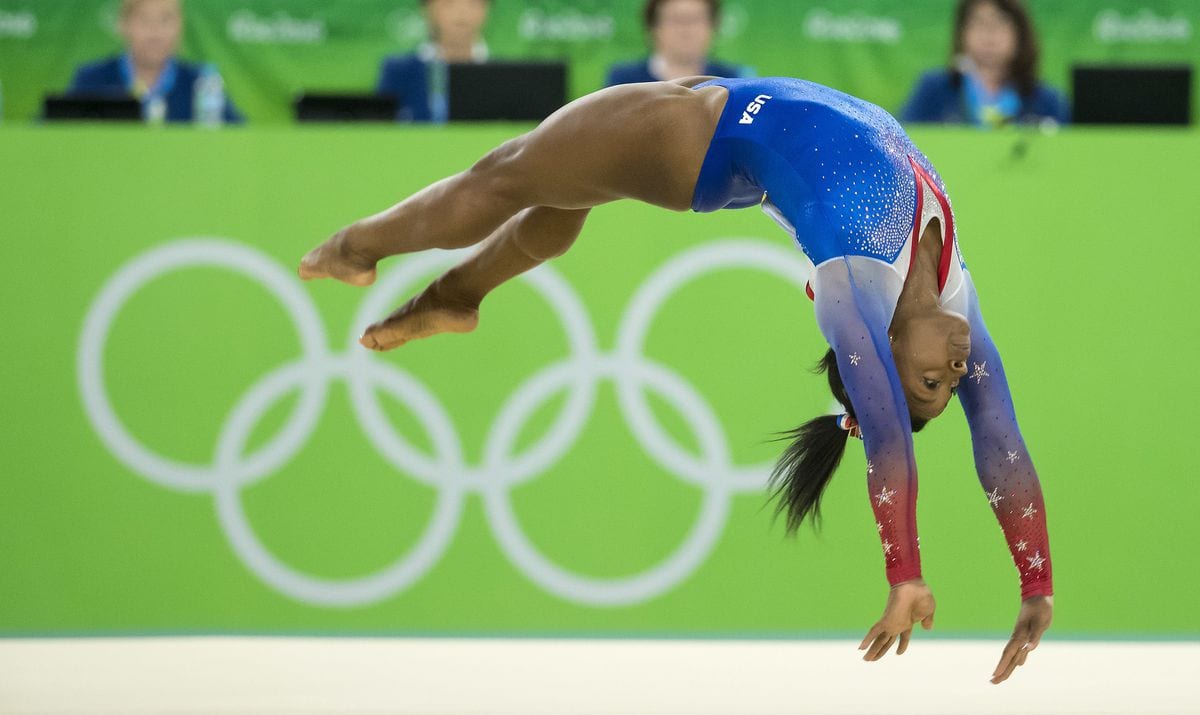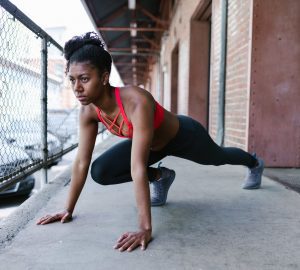Do you want to train like one of the world’s top athletes? If you used the spring and summer shutdowns to focus on fitness, you might feel ready for an intense workout. Why not train like an Olympic gymnast?
You don’t have to invest in a set of parallel bars or a balance beam. The following moves will push you past previous limits. Here are eight Olympic gymnast exercises to add to your routine today.
1. Good, Old-Fashioned Pull-Ups
Before you can swing around the parallel bar like a spinning top, you first need to get yourself up there. Doing so requires considerable upper body strength, but you don’t need any weights to build it.
The only requirement is a pull-up bar — you can find inexpensive models that attach to standard doorways. Once you install yours, experiment with different variations on the classic move to sculpt your upper body without lifting a single dumbbell. If you can do a single-armed version, you win the gold.
2. HIIT
While you marvel at their sculpted muscles, Olympic gymnasts also need an impressive cardiovascular capacity to manage their feats. How can you get your heart pumping?
Good news — you don’t have to spend hours on a treadmill. Why not try high-intensity interval training (HIIT)? Research shows that performing this workout style three times a week improves your cardiovascular fitness as effectively as hitting the elliptical for 60 minutes, five days weekly.
3. V-Ups
Olympic gymnasts have impressive abdominal muscles — why not train your core as they do? If you are a yoga practitioner, you’ve probably done paripurna navasana, or boat pose. This exercise uses a similar technique, and holding this position is one variation you can try.
Additional techniques include bending your legs to make the move less stressful on your lower back. Those with severe distress can keep their feet on the ground, knees bent, and start by leaning their torso back slightly.
As your core strength builds, you can try more advanced methods, such as incorporating a twist to work your oblique muscles. You can also add weights into the mix — hold a dumbbell at chest level or strap on some ankle bands.
4. Scap Shrugs
Do you know those big, triangular-shaped bones in your upper back? Ideally, you should be able to get them to touch in the middle. However, if you sit hunched over a computer all day, your response to this information might be, “Yeah, right.”
Fortunately, you can increase your lumbar flexibility, improve your posture and ease pain, all with one movement. To perform a scap shrug, stand tall — you might want to use a wall if you have poor posture. Then, pull your shoulder blades together as much as you can. Hold for a few seconds, and then release and repeat.
5. Side Planks
Your transverse abdominis muscles are the deepest layer around your waist, and they act like Mother Nature’s girdle. However, for them to do their job, you need to train them.
One of the best methods is through a series of plank exercises. To perform a side variation, begin in the standard push-up position. Turn your body to the side, supporting yourself on your extended right arm and leg. You should immediately feel your core engaging to keep your hips lifted off the floor.
Eventually, you want to keep both legs straight or even lift the top one in a starfish variation. However, to start, feel free to keep your bottom knee on the floor. As you advance, do so by spreading your feet slightly to help with balance, then eventually stacking your shoes on top of each other as you get stronger.
6. Single-Leg Balance Work
Can you transition between natarajasana and vrikshasana without tumbling to the ground? If you train like an Olympic gymnast, you’ll eventually get the knack. In case your Sanskrit is a bit rusty, the above means flowing from dancer pose to tree pose in yoga.
Single-leg balance exercises are incredible for building lower leg and core strength. If you have a neurological condition that makes balance a challenge, such movements can help you regain functionality when practiced safely. Make sure you have a wall or a sturdy, braced chair — you don’t want it to slide — when you practice. You’ll feel far more confident attempting the moves, and eventually, you will improve.
7. Spinal Flexion and Extension
Are you one of roughly 65 million Americans suffering from chronic low-back pain? If so, performing moves that improve hip and hamstring flexibility, such as uttanasana, or standing forward bends, can ease your ache.
Think of your hips as the grand junction of your body. There are a ton of meridians where your connective tissues can form adhesions, which make movement painful. If you are in reasonable shape, try giving a hardcore Ashtanga yoga class a try. Many of the moves, like backbends, require some gymnastic skills, and you will leave feeling both well-exercised and delightfully stretchy.
8. Deep Yoga Stretches
Flexibility is a critical component of Olympic training. If your muscles and connective tissues are as hard as frozen rubber bands, one yank or twist in the wrong direction will lead to injury.
Fortunately, you don’t have to be in terrific shape to try yoga. Many chronic pain patients also find the practice works wonders for them. If you are relatively new to the fitness scene, try a gentle yin yoga class after a challenging run or weight workout. Also called restorative yoga, this style focuses on holding stretches for three to five minutes, and many professional athletes use it in their recovery.
Try These 8 Exercises at Home to Train Like an Olympic Gymnast
If you want to train like an Olympic gymnast, the eight exercises above belong in your fitness routine. Take your workouts to new heights and enjoy improved strength and flexibility.
Author Byline:
Mia Barnes is a health and wellness writer with a strong interest in fitness and nutrition. She is also the Editor in Chief at BodyMind.com.








